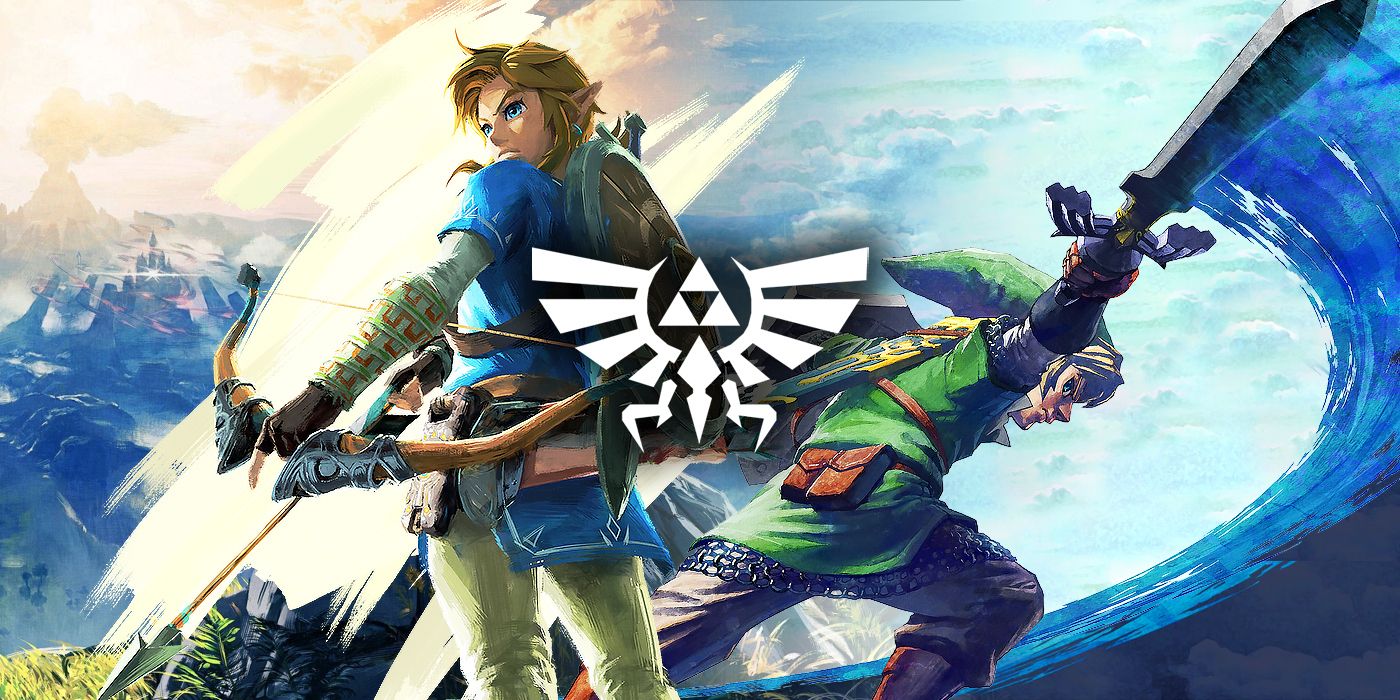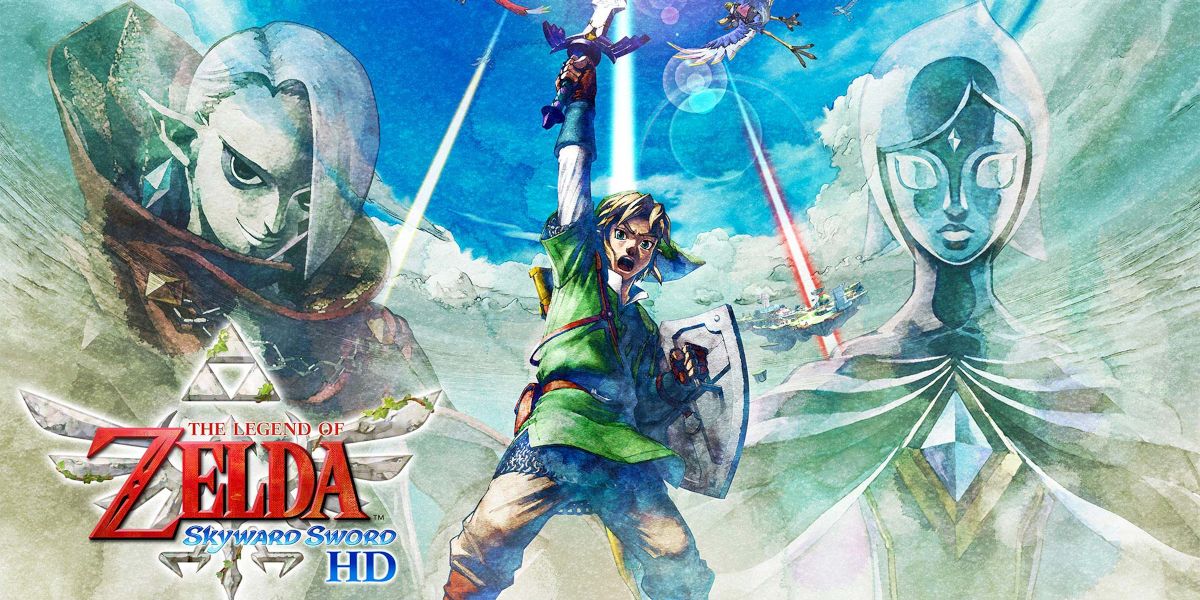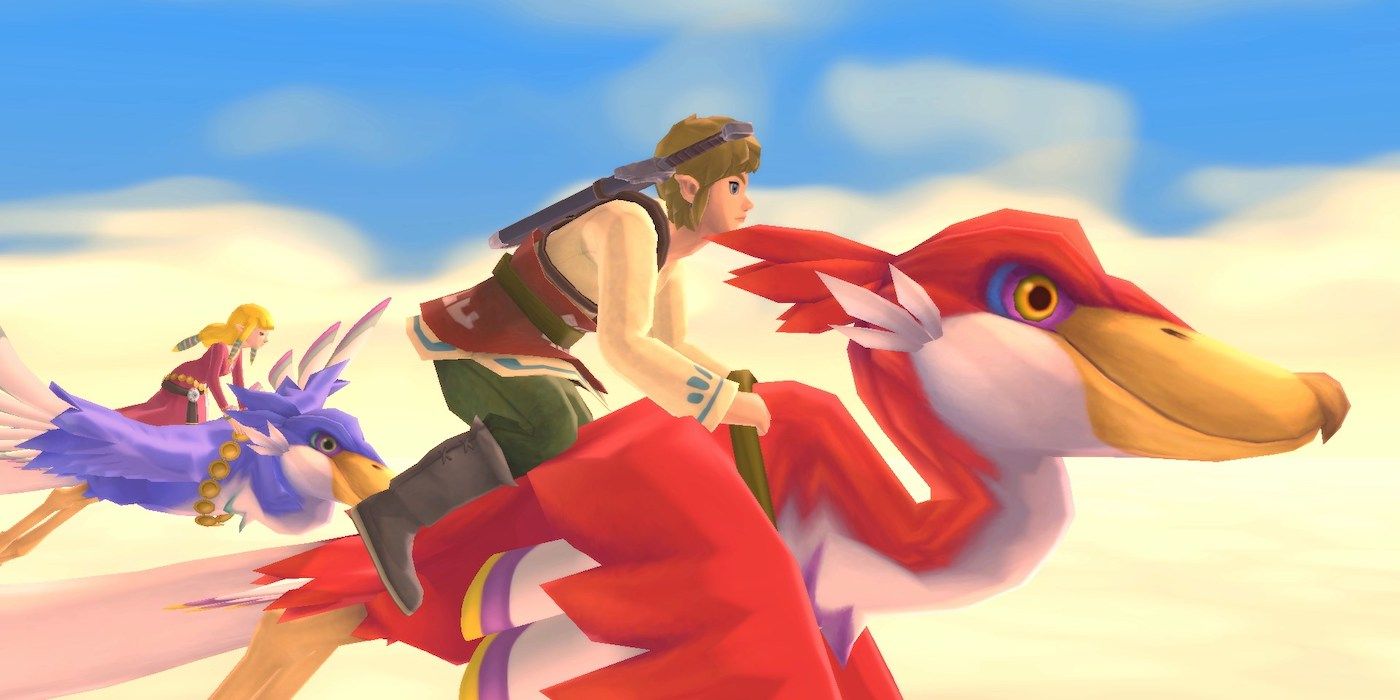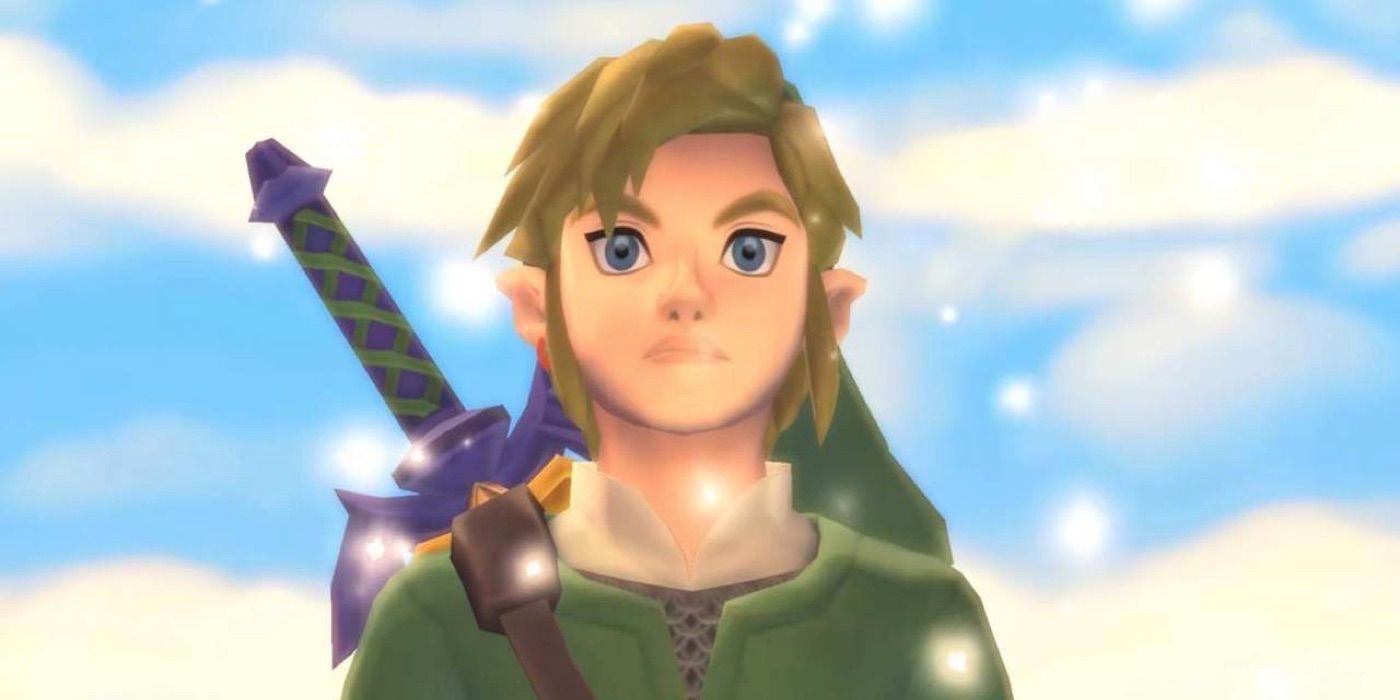The Legend of Zelda: Skyward Sword is, without a doubt, the most divisive entry in The Legend of Zelda franchise since 1987’s Adventure of Link. The initial release’s clunky motion controls posed a challenge on its own, and many players were displeased by the cinematic structure of the game, which was more focused on linear quests than on exploration. Breath of the Wild, on the other hand, received immediate critical acclaim and quickly became the biggest commercial success of the franchise, with almost 23 million copies sold on the Nintendo Switch and more than 1.6 million on the Nintendo Wii U.
Breath of the Wild is fondly remembered for the many innovations it brought to The Legend of Zelda franchise, to the point that it’s often described as “revolutionary.” While the game should indeed be praised for everything it gets right, many of Breath of the Wild’s mechanics and themes were already present in Skyward Sword. As the new Skyward Sword HD release allows many fans to discover the game for the first time, players might find it curious to notice how Breath of the Wild is, in many senses, a direct sequel to the despised Legend of Zelda installment. So, I’m sorry to burst your hate bubble, but without Skyward Sword, there could be no Breath of the Wild.
Let’s start from the basics. Breath of the Wild is highly praised for the vertical exploration it introduces to the franchise, allowing players to climb freely to reach any point of Hyrule’s map. It turns out Skyward Sword is also about vertical exploration, which fits perfectly the theme of a land lost in the skies. In addition, fall damage was highly reduced in Skyward Sword, and while climbing in vines was first introduced in Ocarina of Time, the mechanic was never so extensively used as in Skyward Sword. Also, with vertical exploration, Skyward Sword introduced a stamina meter that gets drained by physical effort, giving players another resource to manage.
Skyward Sword’s stamina meter is also used to run, roll, and perform special attacks, and since this is not an upgradable resource, its presence is sometimes bothersome. Breath of the Wild’s stamina meter is an improvement of Skyward Sword’s, for sure. But without this early experiment, Nintendo wouldn’t have found the perfect balance between limiting the player’s actions and giving players enough stamina to explore the world without feeling frustrated.
Even without the stamina meter, Skyward Sword still puts a lot of effort into making Link’s animation more fluid so that the player feels the impact of quickly climbing a wall or jumping a gap. There’s still no jump button in Skyward Sword, but the game allows Link to move through the levels by leaping over holes, grabbing ropes, and climbing walls, perfecting the mechanics introduced in other 3D The Legend of Zelda games. Skyward Sword also introduces the Sailcloth, a parachute that breaks Link’s fall, allowing players to dive from any height without fearing death. The Sailcloth would be further developed to become Breath of the Wild’s Paraglider, which not only breaks Link’s fall but allow him to glide over Hyrule.
Breath of the Wild would also perfect Skyward Sword’s beacons of light. In Skyward Sword, players can set custom points in their map that become big light beams shining on the horizon, making it easier to walk towards a specific objective. This tool is even used in Skyward Sword to complete the game, as players need to mark the safe path to walk on a sea of quicksand. In Breath of the Wild, the player can set identical light beams over any point of interest they see on the horizon to the same effect.
Breath of the Wild's Sheikah Slate ability to track any object the player might want to find is also the evolution of Skyward Sword’s dowsing ability. In Skyward Sword, players can use the sword to track objects in each level, both for main quests or for collecting optional items. By pointing the sword in front of them, players can know the direction and height they should be looking for a missing item. The dowsing, then, is very similar to the Sheikah Slate’s tracking system, in which a radar detects the proximity of the chosen object.
The dowsing and the tracking abilities are essential for collecting materials you need to upgrade your equipment in Skyward Sword. Surprise, surprise! Crafting was not a Breath of the Wild novelty, as it was actually introduced by Skyward Sword. While wandering the levels, players can collect monsters’ parts, minerals, and other materials they’ll use to upgrade their tools and shields. Bugs can also be collected with a net and used to boost potions and increase their effects.
Skyward Sword’s crafting is the base of both the upgrading and the cooking system of Breath of the Wild. The upgrade system of Skyward Sword goes even beyond Breath of the Wild’s in some aspects, allowing the player to get more powerful versions of their permanent equipment, such as the Bow and the Slingshot. Lastly, the player can also upgrade quivers and bomb bags, allowing them to carry more precious ammunition.
Skyward Sword also introduces a breakable shield to the franchise, with a durability system that would also be applied to weapons in Breath of the Wild. In Skyward Sword, you can block enemies’ attacks with your shield or even parry them to create an opening to counterattack; both actions drain the shield’s durability, making them break over time. Skyward Sword, however, allows players to repair and upgrade shields, a feature many of us felt was missing in Breath of the Wild.
Finally, the techno-magic theme that’s so vital for Breath of the Wild’s worldbuilding was first explored by Skyward Sword. In Breath of the Wild, Link uses a tablet of Sheika technology to perform amazing feats. Besides that, the Four Divine Best players must activate to defeat Calamity Ganon are giant machines shaped like animals. Breath of the Wild leans over technological wonder from the past to justify some of its magical feats. This approach was born from Skyward Sword, in which Link gets mechanical tools that work in a miraculous way, such as the Beetle and the Gust Bellows. There’s also a race of robots in Skyward Sword, building complex machines and mining rocks capable of shifting the time flow.
Playing Skyward Sword even helps the player to understand the introduction of heavy machinery in Breath of the Wild. In Breath of the Wild’s story, the Kingdom of Hyrule uses machines from the far past to fight Calamity Ganon. So, of course, it makes sense these machines exist in The Legend of Zelda lore since Skyward Sword has already advanced technology and is the first game on the franchise’s convoluted timeline.
Yes, Skyward Sword is flawed in many aspects, but Nintendo was already playing with the ideas that would become the foundation of Breath the Wild. Also, some of the best lessons we can all learn come from failure. The lukewarm success of Skyward Sword put Nintendo on a different path, building an open-world that players can explore freely instead of guiding the adventure with cinematic pieces. However, instead of throwing everything away, Nintendo was cautious about rethinking many of Skyward Sword’s mechanics to fit this new direction.
The revolution of Breath of the Wild didn’t come from a void; it’s a work that started in Skyward Sword and even before. New games are built on the results of previous titles. And for everything it gets right and everything it gets wrong, Skyward Sword had a significant influence on Breath of the Wild. The result is one of the best games in the last decade, which was, without a doubt, revolutionary.




.jpg)
